Where: Koh Hin Ngam / Tarutao National Park / Thailand
When: April/2017
Water temperature: warm
Visibility: Good (10-15 meters)
Main attractions: Christmas Tree Worms, Giant Clams
Duration: approximately 30 minutes
This was the second part of a day trip from Koh Lipe to some of the Tarutao National Park islands. this itinerary also included: Koh Jabang and Koh Yang, and ended at Koh Adang shore.
The island is like 10-20 minutes far from Koh Lipe (1,5 km away):
It wasn’t too crowded since I didn’t notice any person near the entire time. The hard corals were at good conditions and it was plenty of different marine species.


The corals here were at big sizes and in good condition, hope they stay that way for a long time. The ones I found:
Lettuce Corals

Many damselfishes make these corals their home, just search between the “leaves”.
Mountain or Hump coral _ Porites lutea
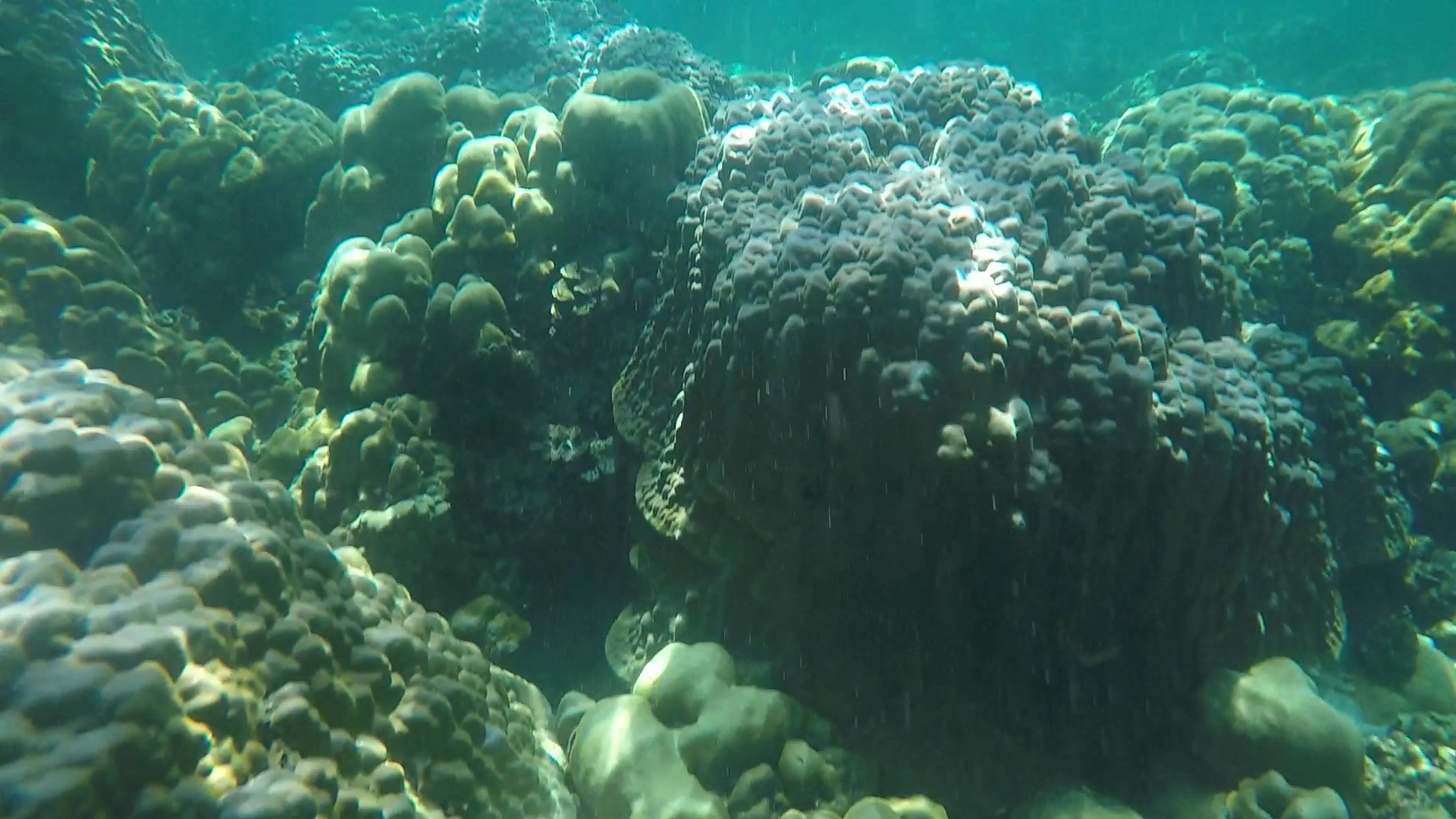
Present in large number, they ara e shelter for Christmas tree worms, giant clams and more.
Other Corals

This one I saw in large number there, still do not know its name.
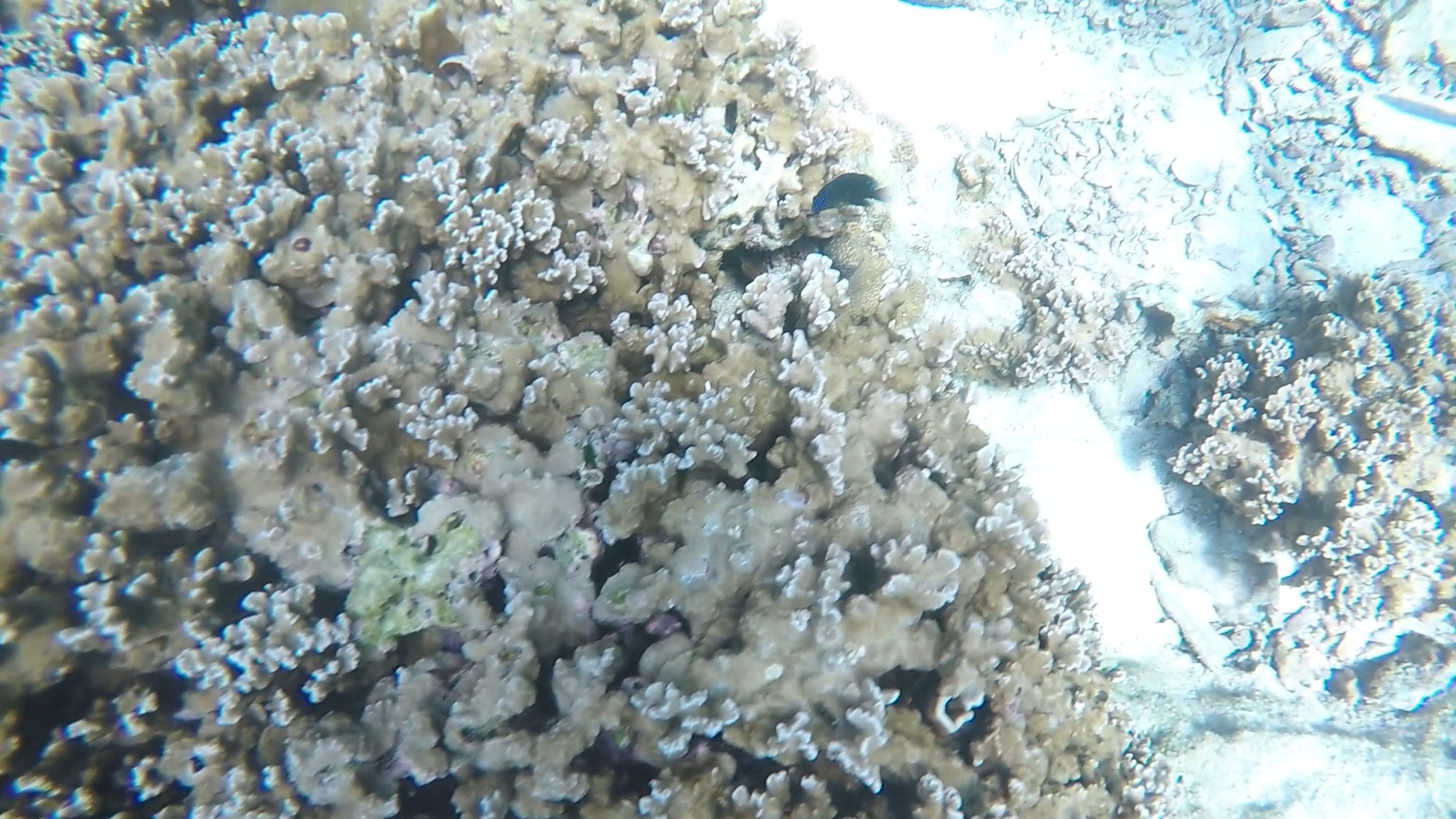
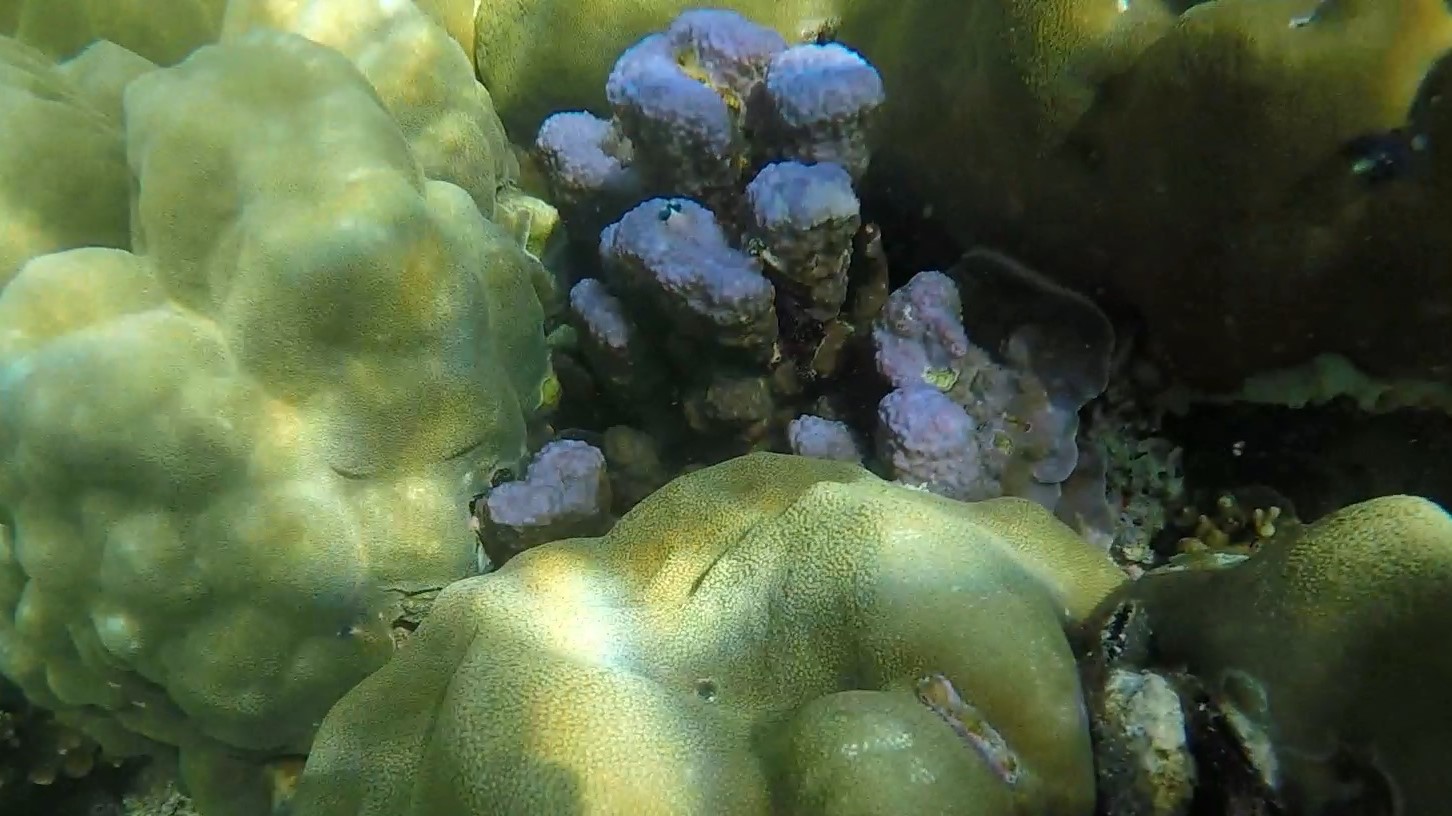

Behns Damsel (juvenile) _ Neoglyphidodon nigroris
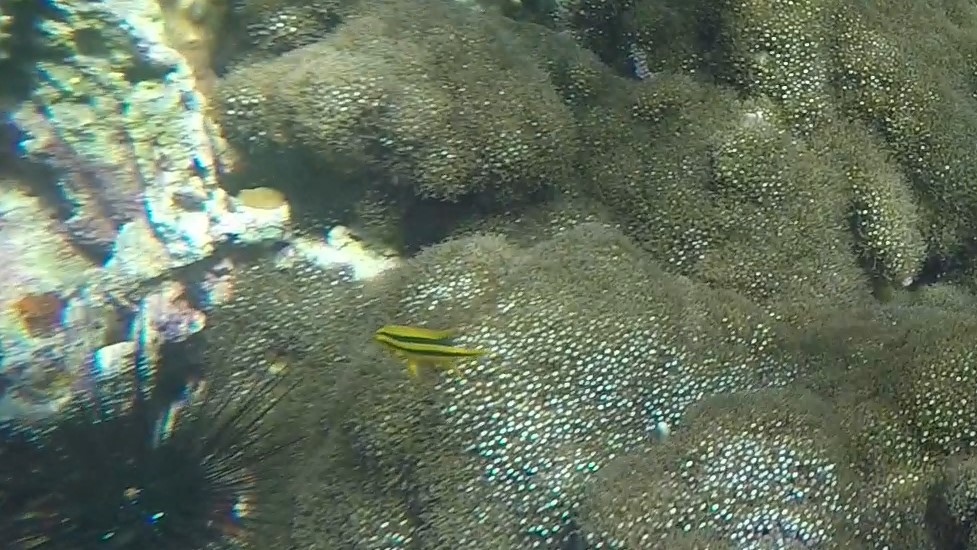
Saw this little one once near some corals and anemones, just notice it once.
Bird Wrasse _ Gomphosus varius
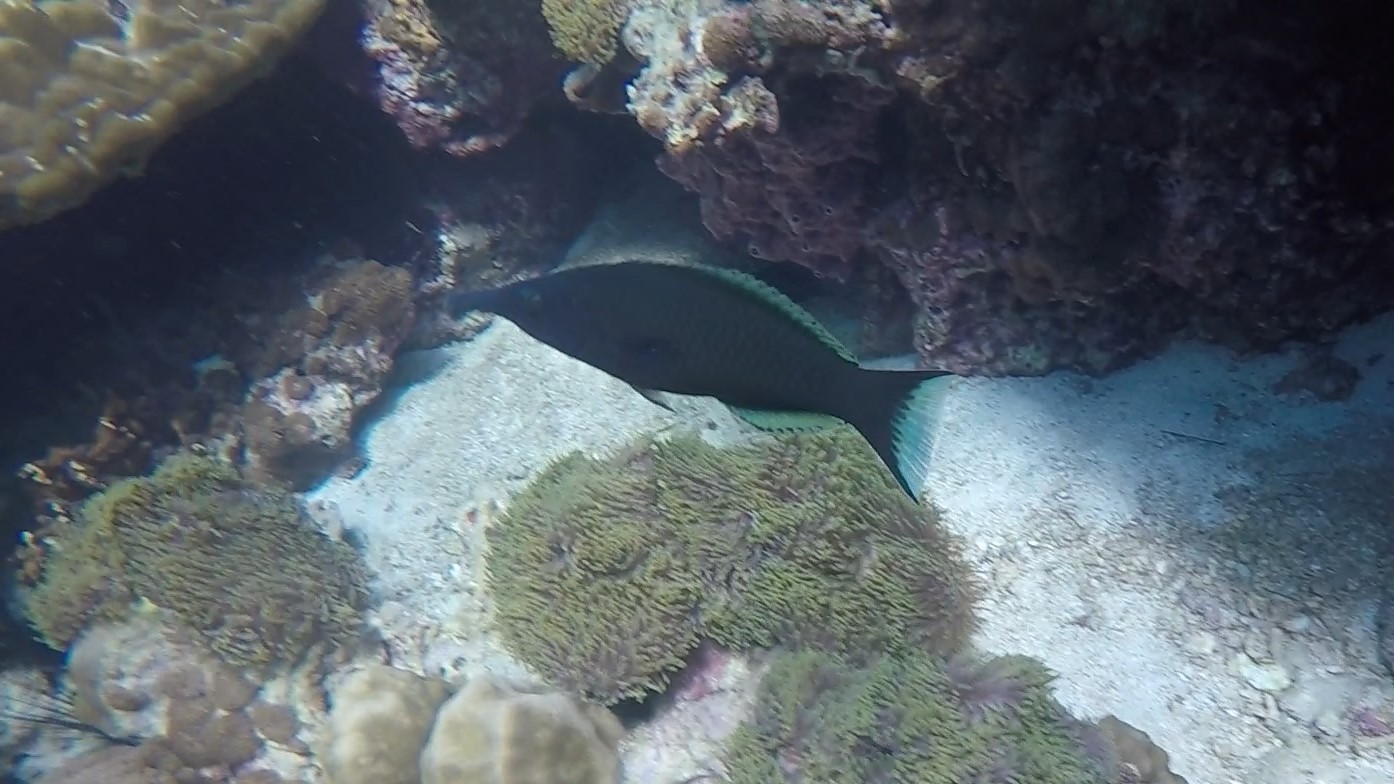
Found around the coral reefs. These ones are not too afraid of us, if you stay quiet for a time they can even swim around searching for food. It has a really nice snout and cool ocean-green fins!
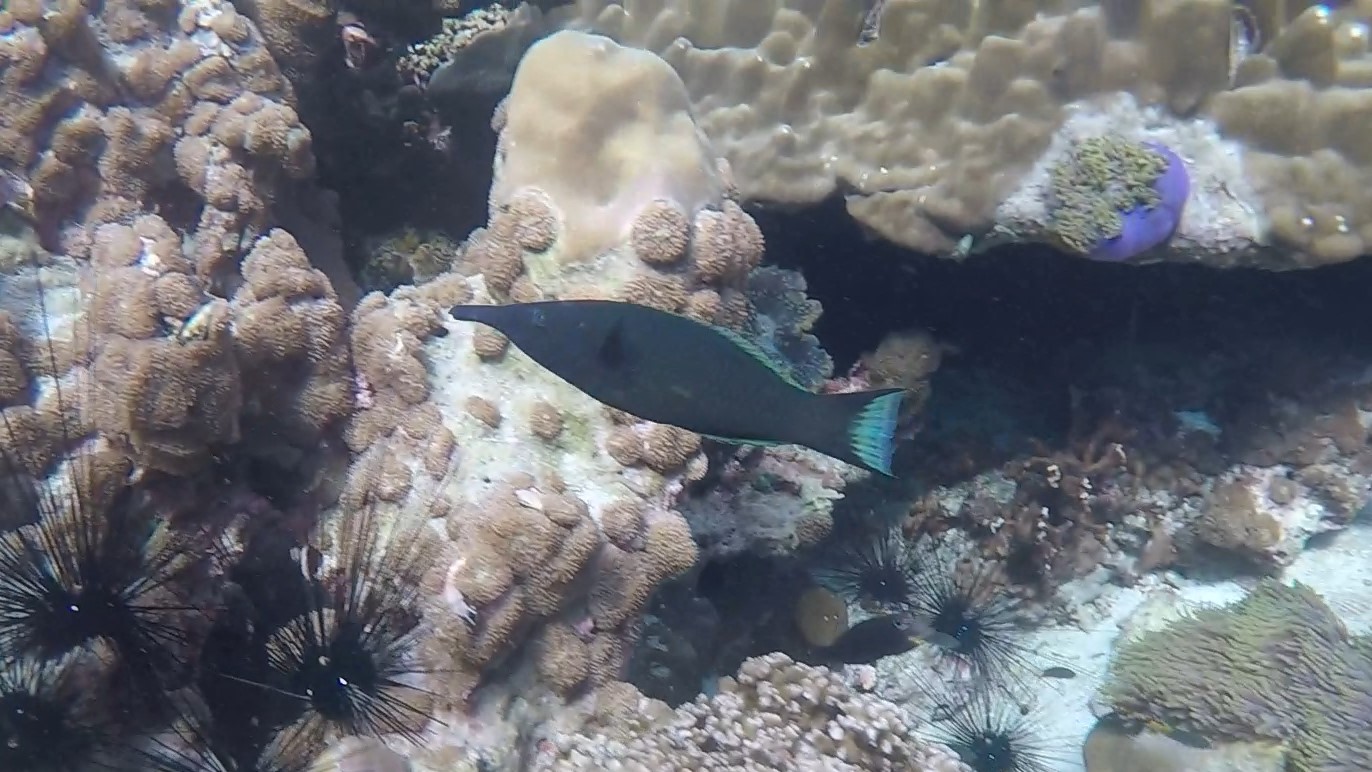
Blackback Butterflyfish _ Chaetodon melannotus
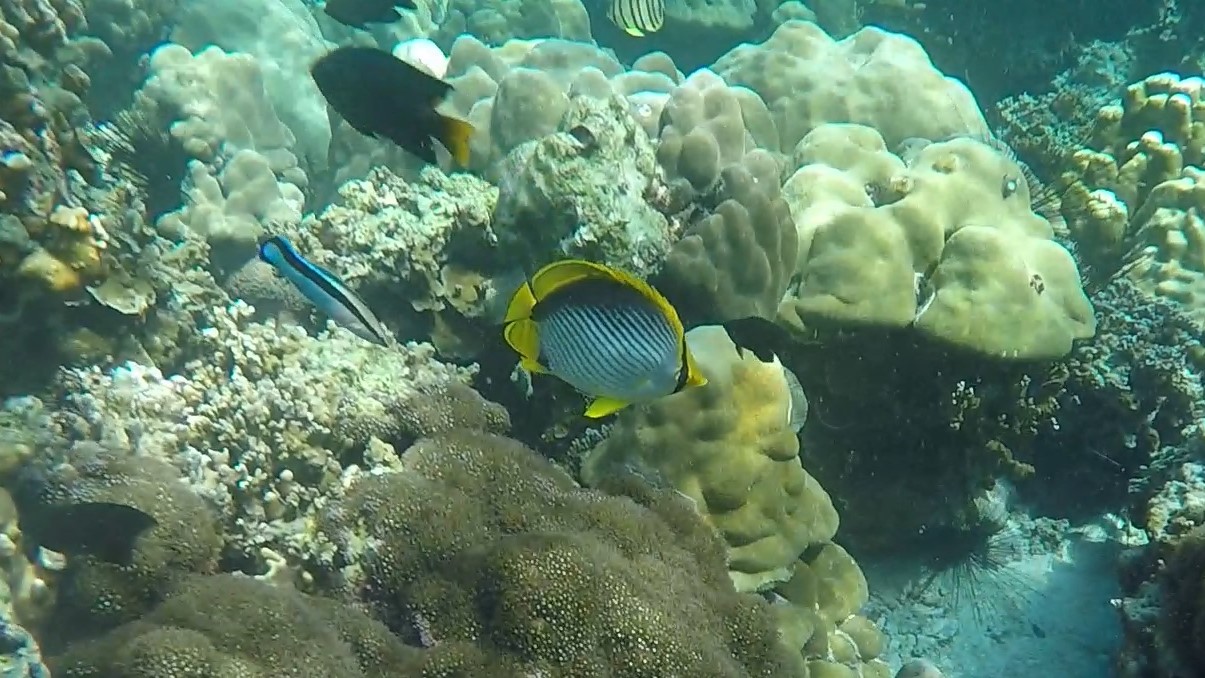
It is easilly seen due to it yellow fins and face color, saw only one there.
Blackspotted puffer _ Arothron nigropunctatus

Beatifull pufferfish, seems to be common at Tarutao islands reefs. Easy to aproach if you go quietly.
Blackedge Thicklip Wrasse _ Hemigymnus melapterus

This is a big wrasse, most times followed by other wrasses or parrotfishes. It is common to see it eating corals and sometimes filtering sand. Saw a couple of them.
Blue Green Chromis _ Chromis viridis

Found them in a group of around 10, near some hard corals. One interesting feature is that they seem to change color depending on the position you see them.



Bluestreak Cleaner Wrasse _ Labroides dimidiatus
or
False cleanerfish _ Aspidontus taeniatus

The main source of food of the cleaner wrasses are fishes parasites. It stays at the named “cleaner stations”, where the client fish stays for a parasite removal spa. This is one of the most common examples of protocooperation.
The false cleanerfish mimics even the movements of the cleaner wrasses, this just to get a chance to get closer to other fishes. Then it bites and takes a chunk of the fishes flesh and leaves. The false cleanerfish is really a blenny, not a wrasse.
I am not very sure wich one is in that photo…
Clarks Anemonefish _ Amphiprion clarkii

Beautifull anemonefish, just saw this group in this trip. A big female was allways protecting the little ones. It surelly deserve more photos:


Dusky parrotfish _ Scarus niger

This beatifull parrotfish has a green eyebrow, both female and male present it.

The female one.
Indo Pacific Sergeant _ Abudefduf vaigiensis

The very common sergeant, always present around snorkelers.
Latticed Butterflyfish _ Chaetodon rafflesi

Not a fast swimmer, but also dont like to stay close to humans. A good way to get close to it is approaching slowly. Great vivid yellow color.
Lemon damselfishes _ Pomacentrus moluccensis
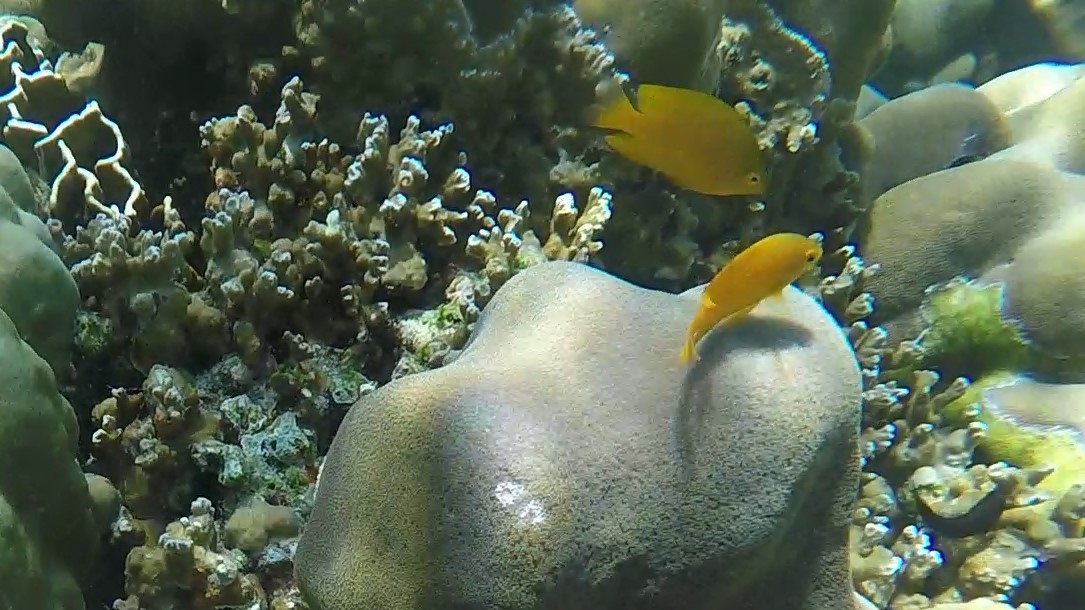
Common seen in corals (table corals and other ones with cracks), mainly in groups. They hide between the coral gaps for protection.
Moon Wrasse _ Thalassoma lunare
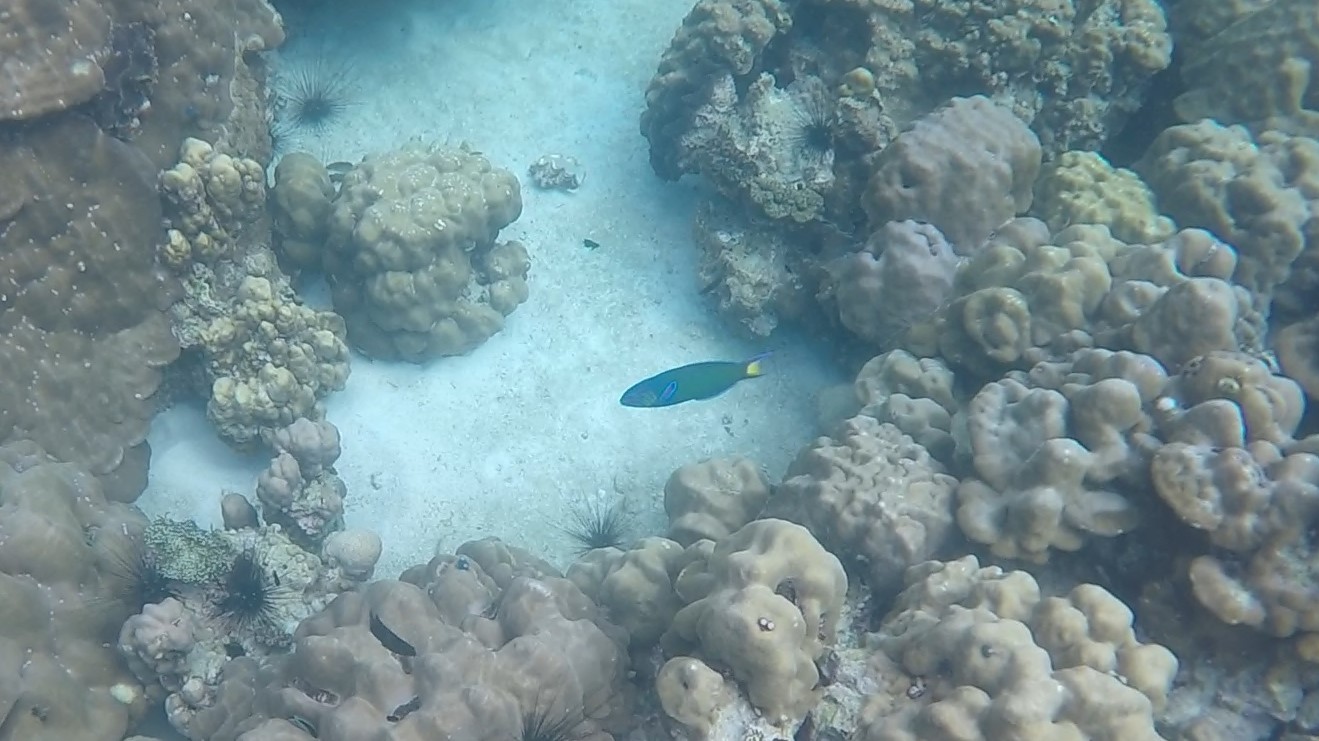
These wrasses have two different colors depending on its stage of growth and it is said that the alpha male change colors from green to blue on the same day. Very curious fish, not afraid of humans.
Powderblue Surgeonfish _ Acanthurus leucosternon

Great colorful fish, one of the most beautiful color patterns I saw in Thailand. I only saw it on Tarutao Islands.

Skunk Anemonefish _ Amphiprion akallopisos

Common anemonefish to be seen, but a very shy one also. It is said that they emit sounds to defend their territories. I confess I didn’t hear any sound from them…
Slingjaw wrasse _ Epibulus insidiator

This fish is known to have the most extreme jaw-protrusion of all fishes, that’s where its name comes from. Saw 2 of them, one male and a female.
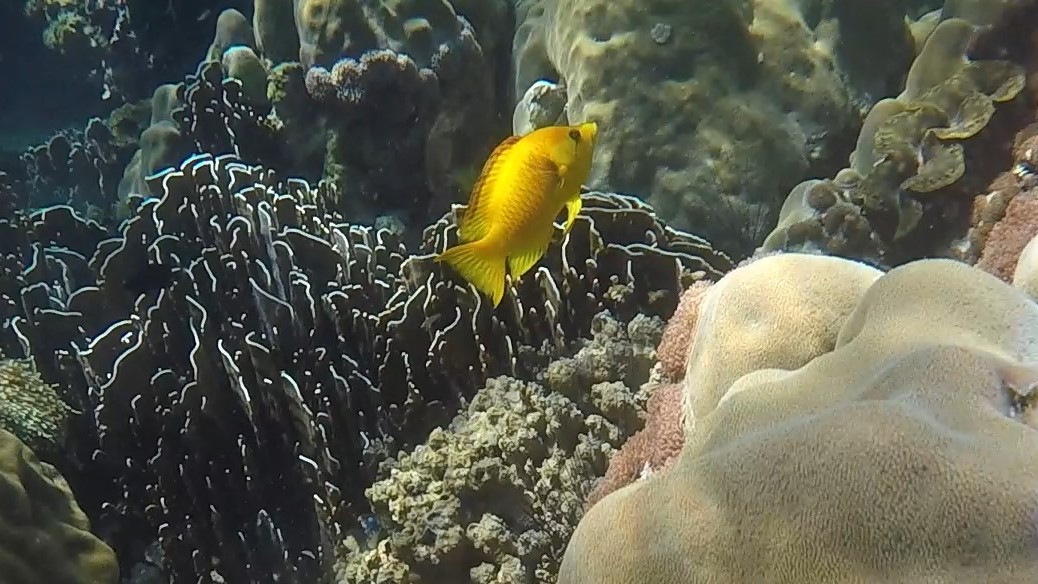

Female with its vivid yellow color.
Two spots banded snapper _ Lutjanus biguttatus

There was a group of 4 fishes, hiding in a shady area. Shadow areas were where I most of the times saw them.
Yellowtail Demoiselle _ Neopomacentrus azysron

Very common in almost all Andaman places I went. In large numbers near hump corals or cliffs.
Yellowtail Sergeant _ Abudefduf notatus
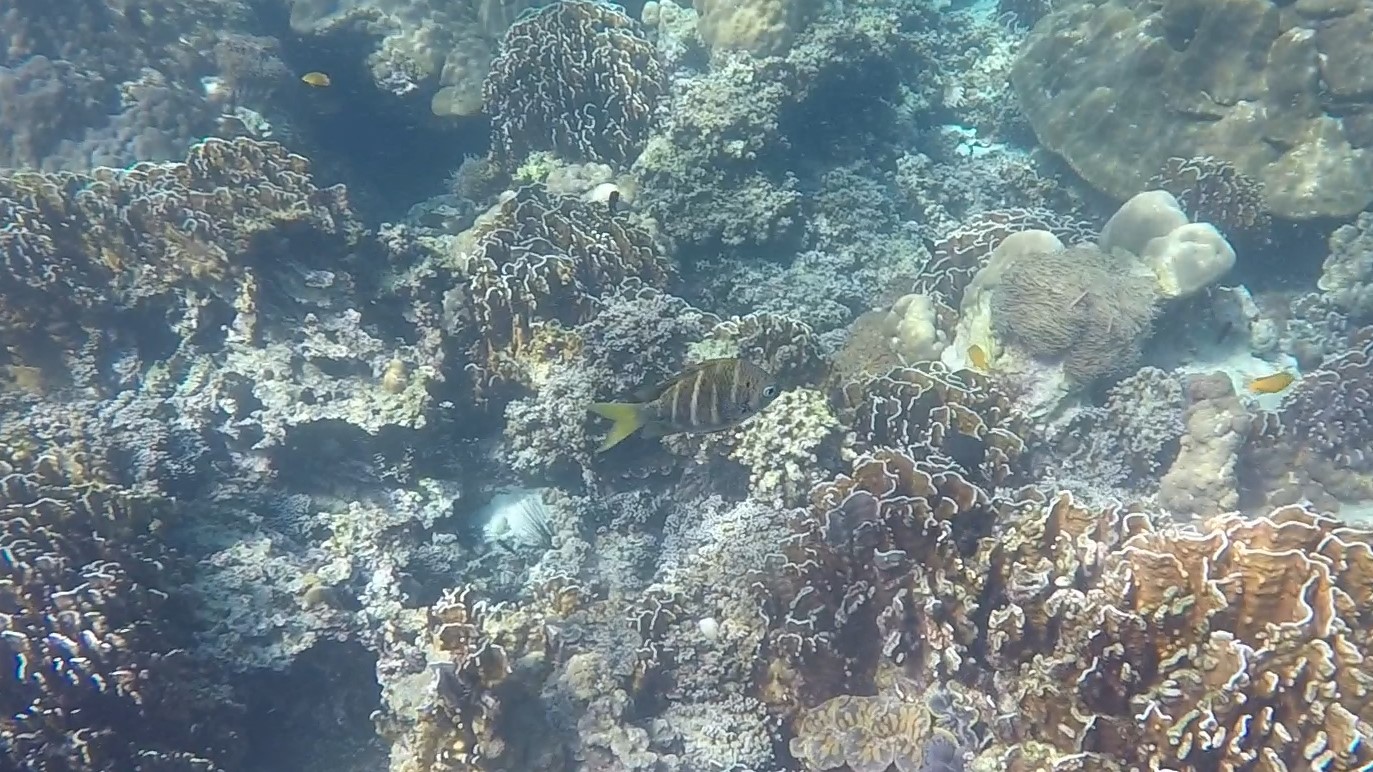
Another species of sergeant, not too common to be seen.

Giant clam _ Tridacna sp.

Great place to see a large quantity of these giant clams, with different colors. It closes when you approach and if you stay long enough, the sound of the shell closing can be heard.
Here other color patterns:
Coral Clams _ Pedum spondyloideum


This one is smaller, but if you pay attention enough, can see it closing its shell as you pass by.
Christmas tree worm _ Spirobranchus giganteus

Another great creature is the Christmas tree worm. Saw most of them lying on the surface of hump corals. The tree-shaped crowns are both feeding and breathing parts of this annelid.
Take a look at some variations:
Black Diadema Urchin _ Diadema setosum

Very common in most coral areas, found on corals and on sandy bottoms. Be careful where you step on!
Black sea cucumber _ Holothuria atra
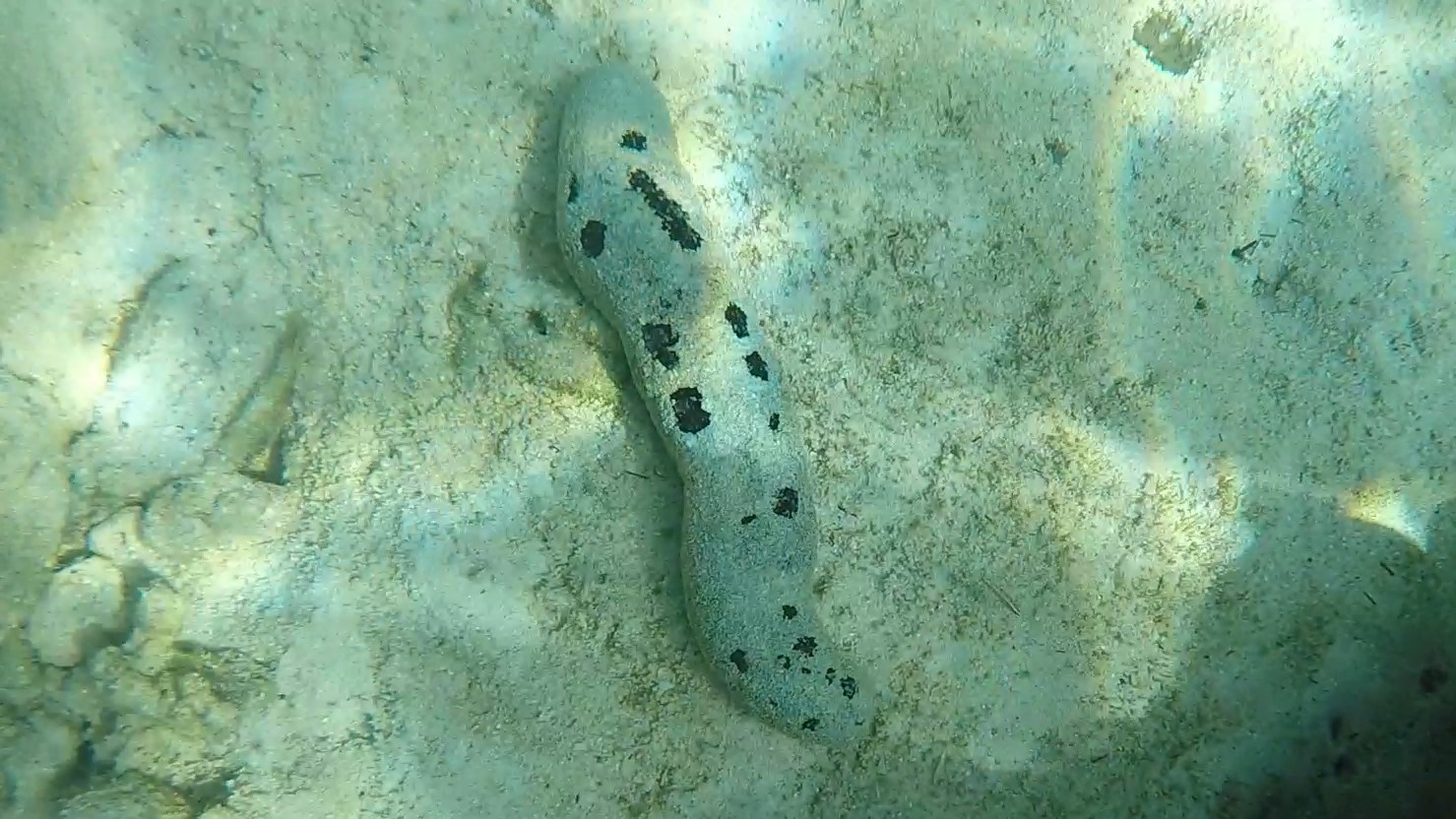
Most times covered with sand, only some black spots showing its true colors. Saw most of them on sand.
Giant Carpet Anemone _ Stichodactyla gigantea

This was the first time I saw this anemone, and it was guarded by the not so common Clarck Anemonefish.
Magnificent Anemone _ Heteractis magnifica

The beautifull purple vase you see there is the column wich is visible when the animal retracts. It can be of diferent colors and is always a good bet to search for anemonefishes (as the name suggests).
Overall: It was a great place for snorkeling, left with a desire to stay a little longer. Great to see a huge number of clams and Christmas tree worms in the same place.
More places of the “Plankton e Sunset Trip” from Koh Lipe:
